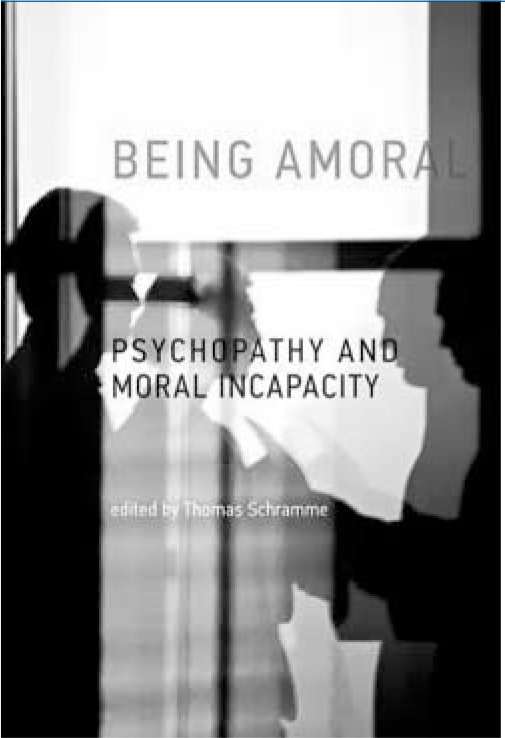
This volume aims to examine the concept of psychopathy in relation to the lack of moral capacity, which is widely believed to be the defining characteristic of the condition.
The essays in this book cover a broad spectrum. Some authors use psychopathy as a way of examining the nature and structure of morality. The questions addressed include whether moral behaviour is rooted in emotion (or ‘sentiment’), rationality or a combination of the two; whether moral internalism holds (i.e. that awareness that an action is morally required entails motivation to carry out that action); the nature and overlaps between empathy, sympathy and the ability to take the perspective of another person; whether one can experience resentment at being the victim of a moral transgression without caring about others who are similarly victimised; and whether the distinction between moral and conventional transgressions of rules is a valid one.
A central problem that arises when writing about psychopathy is uncertainty about the concept itself. This volume contains nearly as many definitions as there are chapters. Psychopathy is variously defined as a discrete condition based on distinct neuropathological abnormalities; an extreme form of antisocial personality disorder; sociopathy plus violence; an above-threshold score on the Psychopathy Checklist – Revised (PCL-R); as primary or secondary depending on whether one scores highly on Factor 1 or Factor 2 of the PCL-R; and as an inability to care about moral reasons and the effects of one's actions on others. Gwen Adshead has contributed an interesting essay in which she examines abnormal use of language and narrative incoherence as features of psychopathy. Another interesting chapter is on dangerous and severe personality disorder, a concept that overlaps with, but is non-identical to, psychopathy.
In trying to decide whether psychopaths, however defined, are amoral, we hit up against a similar problem of the heterogeneity of moral concepts. This is important when we come to consider whether psychopathy leads to diminished moral responsibility. Such considerations bear on the question of what responses are appropriate to psychopathic wrongdoing. Shoemaker argues for a need to separate moral and legal responsibility and points out that what may be a mitigating factor with regard to moral responsibility (e.g. inability to care about causing harm to others) may be an aggravating factor when criminal penalties are being imposed.
We live in an era in which long-established and venerable psychiatric categories such as schizophrenia are being called into question by research in epidemiology and molecular genetics. In this context, it seems unlikely that psychopathic personality is waiting to emerge as a discrete condition separable from related disorders. The most that can be asked of most of our diagnoses is that they have practical value in the understanding and treatment of our patients.
Two central questions are therefore whether the concept of psychopathy aids or obscures our understanding, and whether overall it does good or causes harm? We know that there are people who are callous and unemotional, who are incorrigible and unpredictable, who do not care much about other people, who are grandiose and superficially charming and so on. We are learning about how these traits can arise from various combinations of nature, nurture and Nietzsche, and something of the associated differences in brain structure and functioning. Whether these traits really come together in the entity that we call psychopathic personality remains an open question.
Such research should not get in the way of the need to understand such people in the context of their lives and histories and especially their own experiences as victims of abuse and cruelty. It is also important to understand the social contexts that allow hitherto blameless people to behave in ways that are callous, violent and atrocious. One striking example that recently came to my attention is that of Carmen Mory. Before the outbreak of the Second World War, she was a journalist at that morally impeccable publication, the Manchester Guardian. She was subsequently imprisoned in Ravensbrück concentration camp where she became one of the most brutal and feared kapos or prisoner-guards. One risk of the psychopathy concept is that it locates the problem in the mind or brain of the individual and neglects contexts such as these.
The essays in this book are thoughtful and well-written. The editor Thomas Schramme ably summarises the many conceptual problems that arise when we examine the morality of psychopaths. This book will appeal to psychiatrists with an interest in moral philosophy and to forensic psychiatrists who have to deal with patients so labelled.



eLetters
No eLetters have been published for this article.